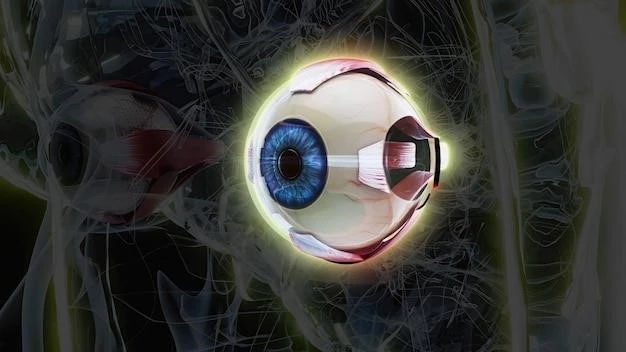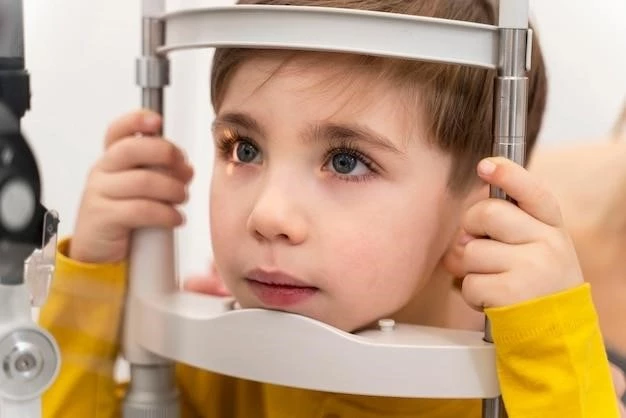Introduction
Microcephaly-microcornea syndrome, Seemanova type is a rare condition characterized by specific physical features and intellectual disabilities. The syndrome presents with microcephaly, microcornea, congenital cataract, growth retardation, and more.
Overview of Microcephaly Microcornea Syndrome Seemanova Type
Microcephaly-microcornea syndrome, Seemanova type is a rare genetic disorder characterized by microcephaly (abnormally small head), brachycephaly, eye abnormalities including microcornea and congenital cataract, hypogenitalism, intellectual deficits, growth retardation, and spasticity. This syndrome typically presents with distinct facial features, such as a characteristic facies. It is an X-linked condition with very few reported cases globally, making it a significant challenge in terms of diagnosis and management.
Symptoms and Characteristics
Microcephaly-microcornea syndrome, Seemanova type is characterized by microcephaly, brachycephaly, eye anomalies like microcornea and congenital cataract, intellectual deficits, growth retardation, and spasticity. Other clinical features may include hypogenitalism and distinct facial characteristics.
Key Features of the Syndrome
Microcephaly-microcornea syndrome, Seemanova type is characterized by microcephaly, brachycephaly, eye anomalies like microcornea and congenital cataract, hypogenitalism, severe intellectual deficit, growth retardation, and progressive spasticity. This rare condition, typically affecting individuals from childhood, results in distinct facial characteristics and demands specialized care due to its complex manifestations.
Causes and Genetic Factors
Microcephaly-microcornea syndrome, Seemanova type is primarily caused by genetic factors leading to abnormal brain and eye development. It may also be associated with specific chromosomal abnormalities, contributing to the complex manifestations of the syndrome.
Understanding the Etiology of Microcephaly Microcornea Syndrome
The genetic factors underlying Microcephaly-Microcornea Syndrome, Seemanova type primarily contribute to the abnormal development of the brain and eyes. These factors may involve chromosomal abnormalities and specific gene mutations that impact the complex manifestations seen in individuals affected by the syndrome.
Diagnosis and Specialist Referrals
Diagnosing Microcephaly-microcornea syndrome, Seemanova type involves genetic testing, imaging studies, and clinical evaluations. Specialist referrals may include geneticists, neurologists, ophthalmologists, and other healthcare professionals with expertise in managing rare genetic disorders.
Diagnostic Procedures and Specialist Involvement
Diagnosis of Microcephaly-Microcornea Syndrome, Seemanova type involves genetic testing, imaging studies like MRI, and clinical evaluations assessing growth, neurodevelopment, and eye abnormalities. Specialist involvement may include geneticists, neurologists, ophthalmologists, and other experts familiar with rare genetic disorders.

Treatment Options
Management of Microcephaly-microcornea syndrome, Seemanova type involves a multidisciplinary approach focusing on addressing individual symptoms and providing supportive care. Treatment strategies may include early intervention programs, physical therapy, educational support, and surgical interventions to manage specific complications related to the syndrome.
Management Approaches for Microcephaly Microcornea Syndrome Seemanova Type
Management of Microcephaly Microcornea Syndrome Seemanova Type typically involves a comprehensive and multidisciplinary approach aimed at addressing the individual symptoms and improving the quality of life for affected individuals. This may include early intervention programs, physical therapy for motor development, educational support tailored to the individual’s needs, and surgical interventions to address specific complications, such as congenital cataracts or spasticity. The management plan is often individualized based on the unique presentation and requirements of each patient, with regular monitoring and adjustments to treatment strategies as needed.
Research and Specialists
Specialists knowledgeable about Microcephaly-microcornea syndrome, Seemanova type engage in research, conduct clinical trials, and provide expert guidance on managing this rare genetic disorder. These specialists are essential in advancing understanding and treatment options for individuals affected by this syndrome.
Experts and Ongoing Research in the Field
Specialists knowledgeable about Microcephaly-microcornea syndrome, Seemanova type engage in ongoing research, clinical trials, and scientific advancements in the field. By investigating the genetic underpinnings and clinical manifestations of the syndrome, these experts contribute to the development of improved diagnostic tools and treatment strategies for individuals affected by this rare genetic disorder.

Support Groups and Resources
Individuals affected by Microcephaly-microcornea syndrome, Seemanova type can find valuable support through dedicated organizations and financial assistance programs. These resources aim to provide guidance, information, and community connections for individuals and families navigating this rare genetic disorder.
Community Support and Financial Assistance
Support groups and resources are available for individuals and families affected by Microcephaly-Microcornea Syndrome, Seemanova type. These community organizations offer valuable guidance, emotional support, and additional resources to help navigate the challenges associated with this rare genetic disorder. Additionally, financial assistance programs may provide aid in managing medical expenses and accessing specialized care.
Prognosis and Complications
The prognosis for individuals with Microcephaly-microcornea syndrome, Seemanova type varies depending on the severity of symptoms and complications. Complications may arise from intellectual deficits, growth retardation, and spasticity, requiring ongoing medical management and support.
Outlook and Potential Challenges
Individuals diagnosed with Microcephaly-microcornea syndrome, Seemanova type may face challenges related to intellectual deficits, growth retardation, spasticity, and other associated symptoms. The prognosis varies based on the severity of these complications, highlighting the importance of ongoing medical support and individualized care to address the unique needs of each patient.
Conclusion
In conclusion, individuals diagnosed with Microcephaly-microcornea syndrome, Seemanova type may face variances in prognosis based on symptom severity and complications. Ongoing medical support and personalized care are crucial for addressing individual needs and ensuring the best possible outcomes for affected individuals.
Summary of Microcephaly Microcornea Syndrome Seemanova Type
Microcephaly-microcornea syndrome, Seemanova type is a rare genetic disorder characterized by microcephaly, brachycephaly, eye anomalies like microcornea and congenital cataract, severe intellectual deficits, and growth retardation. This X-linked syndrome presents challenges such as hypogenitalism and progressive spasticity, necessitating comprehensive medical support and individualized care to manage the complex symptoms and optimize outcomes for affected individuals.
